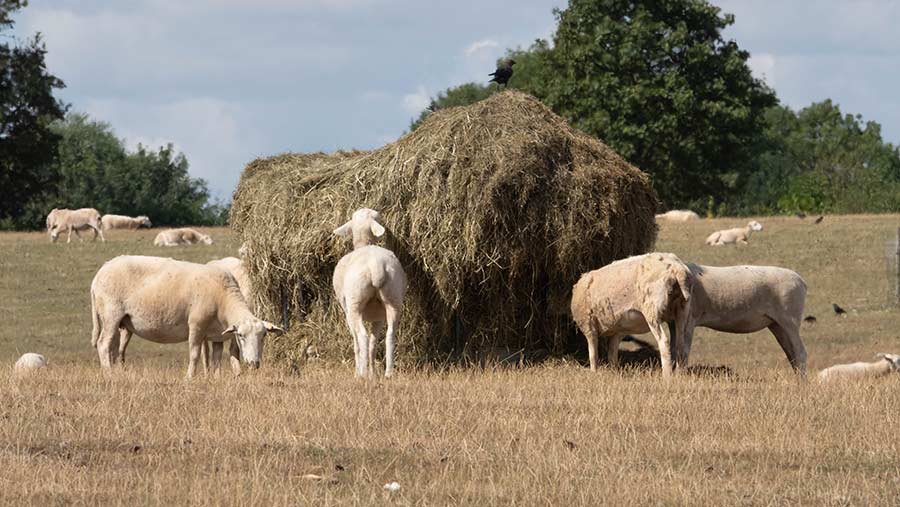Plan now for summer drought, livestock farmers told
 © Tim Scrivener
© Tim Scrivener Livestock farmers are being advised to start planning now for possible drought conditions over the summer months.
A very dry spring has left many livestock farmers with limited grass growth to meet the growing demand for feed following lambing and calving.
Some farms have reported grass growth to be 40% behind the long-term average and growth continues to be restricted by a lack of moisture, according to farming charity Forage Aid.
See also: Advice for managing forage supplies in a drought
“After dealing with serious flooding around the country in 2019, the last thing we expected to be warning about in May would be the potential for another drought,” said Forage Aid founder and chairman Andrew Ward.
“However, after a very dry spring that is exactly what we are concerned about.”
The last drought in the UK happened only two years ago in 2018, and after a difficult 2019 many livestock farms may already be running tight for feed stocks.
“While we can hope that rain arrives in time, hope is not a strategy for good business planning,” added Mr Ward, who farms who farms 650ha of arable land near Leadenham, in Lincolnshire.
Forage Aid are asking farmers to start thinking about what actions they can take to protect their futures if another drought takes hold.
Have a plan
Building a drought resilience plan now can enable farmers to manage a drought period, said Neil Wilson, Forage Aid trustee and executive director of the Institute of Auctioneers and Appraisers in Scotland.
There are several resources available to help farmers plan for dry conditions. AHDB offers a feed budget planner to help budget throughout the season; Scotland’s Farm Advisory Service also offers feed budgeting advice and Quality Meat Scotland has produced a helpful guide: Managing grass in a dry spring.
The Scottish @GrasscheckGB farms are showing total grass growth to be 40% behind the long-term average and growth is now generally being restricted by soil moisture levels.
👉Here are five top tips to help manage grass and keep stock fed during a dry spring: pic.twitter.com/t549u5F4CH— QMS (@qmscotland) May 15, 2020
According to the Environment Agency, river flow rates have decreased at the majority of sites it monitors across England and are classed as “noticeably low” at a third of sites. For the past 11 weeks, rainfall levels have been low or “exceptionally low” across England, it says.
The generally settled conditions should remain throughout June, but the possibility of the occasional spell of unsettled weather remains, according to the Met Office’s long-range forecast.
The rain is most likely to be confined to the north-west of the UK, with a slight risk of thundery outbreaks in the South East at times. Temperatures are initially expected to be above average, with a chance of it becoming very warm or hot at times in the South, although probably returning towards average towards the middle of June, particularly in the North.
To offer donations of forage and bedding please to Forage Aid, visit forageaid.org.uk or call 07967 219991. For cash donations www.justgiving.com/forage-aid.
